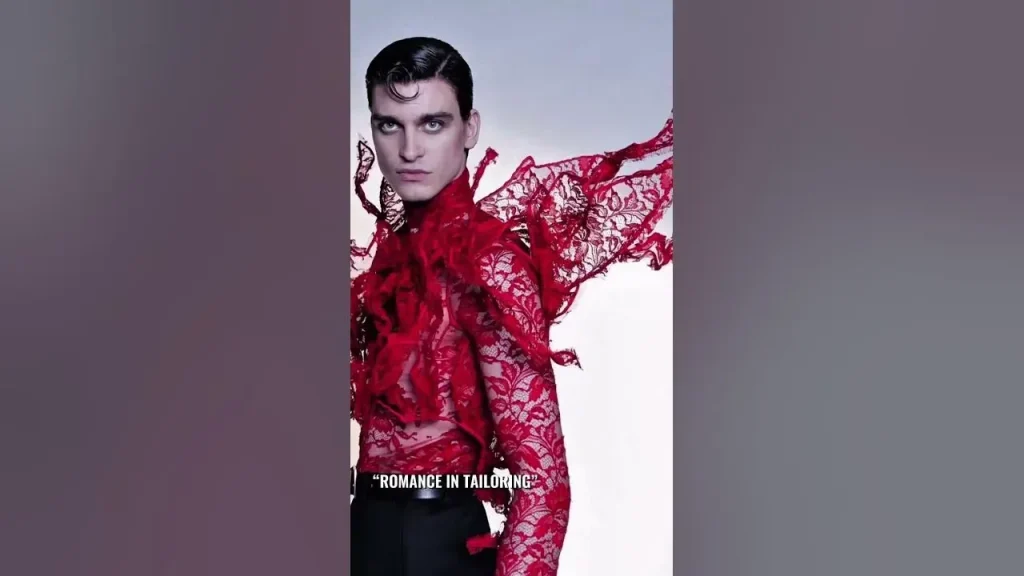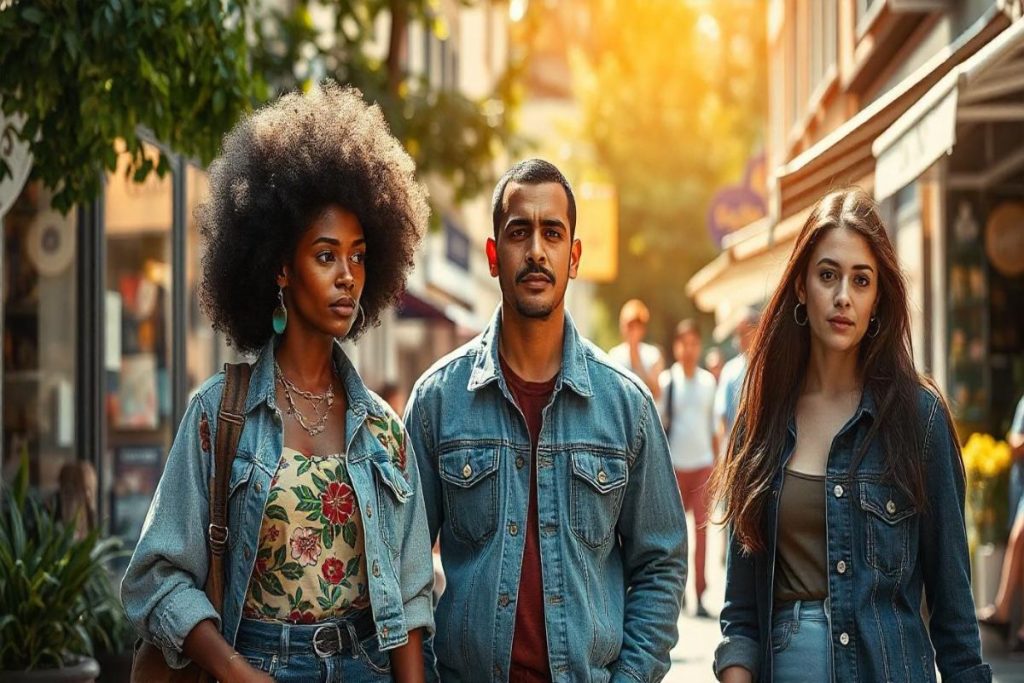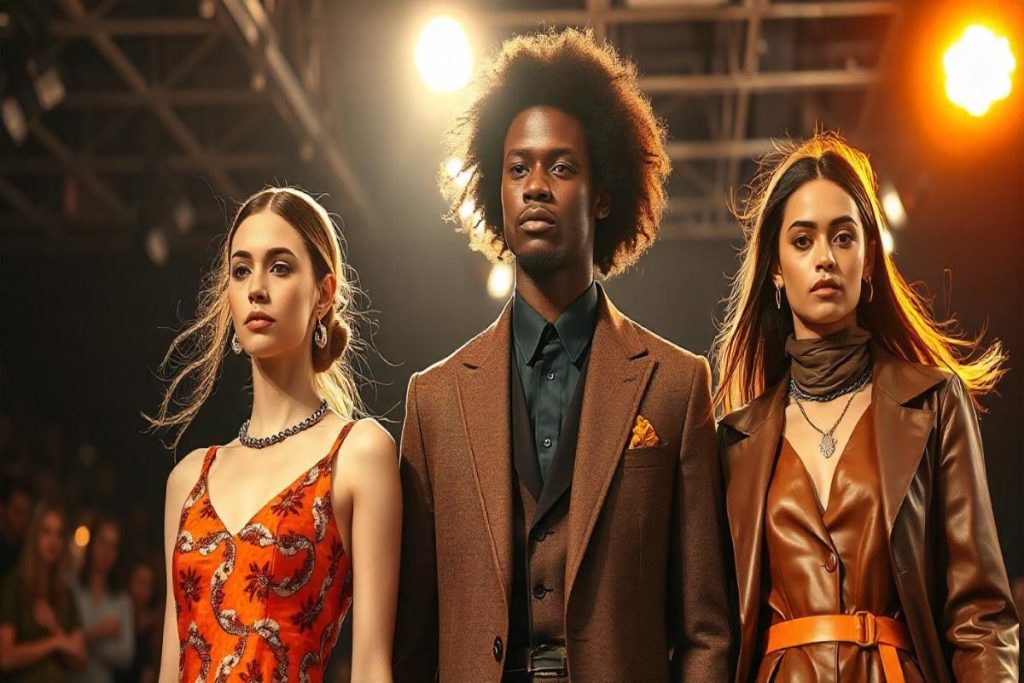Black dandyism emerges as a vibrant celebration of style and identity, particularly highlighted during the Met Gala 2023. This year’s theme, ‘Superfine: Tailoring Black Style,’ aims to showcase the powerful role fashion plays for Black men, capturing the essence of the Black experience through clothing. With influential figures like Colman Domingo making waves with their distinctive fashion choices, the event dives deep into the historical roots and modern interpretations of dandyism. Drawing from works by scholars like Monica L. Miller, known for her exploration in Black style exhibitions, the gala highlights the transformation of dandyism throughout history—from its origins in the African diaspora to its contemporary relevance. As we reflect on dandyism history, it becomes clear that it is not merely about stylish attire, but a profound statement on race, culture, and individuality.
The concept of dandyism, often associated with flamboyant style and meticulous tailoring, resonates throughout Black culture’s journey. Alternative terms such as sartorial elegance and fashionable resistance highlight how personal expression through clothing has been a form of reclamation and empowerment. Through various eras, including the cultural prosperity of the Harlem Renaissance and the civil rights movement, Black individuals have continuously redefined their presentation in society. Both the current focus on Black dandyism at high-profile events like the Met Gala and the historical significance explored by figures like Monica L. Miller underscore this ongoing narrative of identity construction through fashion. As we delve into this topic, it’s essential to appreciate how these layers of meaning have been stitched into the fabric of Black history and cultural heritage.
The Met Gala 2023: A Celebration of Black Style
This year’s Met Gala, titled ‘Superfine: Tailoring Black Style,’ served as a pivotal moment in fashion history, specifically celebrating the profound influence of Black men in the realm of style. The theme draws inspiration from Monica L. Miller’s influential text, highlighting how Black dandyism has continually evolved over centuries and how it intertwines with cultural identity. The gala created a space for the narrative of Black style to be recognized on a global scale, emphasizing not only aesthetics but also the socio-political undertones that accompany this unique fashion expression.
Colman Domingo, a prominent figure at the gala, exemplifies this rich narrative through his personal journey and distinctive fashion choices. His creations, which include striking ensembles that nod to the historical roots of Black dandyism, showcase how clothing can tell stories of freedom, resistance, and identity. As the night unveiled, viewers witnessed an eloquent synthesis of history and modernity on the red carpet, reminiscent of the broader cultural resonance of Black fashion as it ascends to greater visibility and significance in contemporary society.
Colman Domingo: The Face of Modern Dandyism
Colman Domingo’s emergence as a fashion icon is not simply about clothing but reflects a deeper understanding and appreciation of Black dandyism. His tailored looks, characterized by bold colors and unique silhouettes, celebrate individuality and challenge traditional fashion norms. As a co-chair of the Met Gala, Domingo embodies the spirit of the event by modernizing dandy aesthetics while maintaining its historical essence. His distinctive style has garnered attention not only as a means of artistic expression but also as a platform to discuss broader themes surrounding race and identity within the context of fashion.
The fashion choices Domingo made for the Met Gala underscore his commitment to highlighting the connection between style and personal narrative. His ensembles, infused with high craftsmanship and vibrant cultural references, demand attention to the complexities of Black identity. Colman Domingo illustrates how dandyism can serve as a vehicle through which one claims space and asserts identity in a predominantly Eurocentric fashion landscape, reminding viewers that fashion is more than surface-level appearance; it is deeply intertwined with historical significance and cultural heritage.
Embracing Black Dandyism in Contemporary Fashion
Black dandyism takes center stage in conversations about fashion, as it is not merely about constrained notions of taste or elegance but rather a bold assertion of identity against prevailing social norms. The movement’s roots can be traced back to the experiences of Black men across generations, particularly in moments where fashion was both a source of pride and a form of rebellion. In recent years, the rise of Black designers and their impact on mainstream fashion continues to uplift the significance of dandyism, emphasizing its importance in challenging stereotypes and shaping new narratives in the industry.
The Met Gala exemplifies this ongoing dialogue, illustrating how key figures in Black fashion draw from the rich tapestry of Black dandyism to influence modern aesthetics. By showcasing clothing that embodies rich histories and personal stories, the gala acts as a celebration of diversity in fashion and the resilience of Black culture. Through events like these, dandyism not only finds renewed appreciation but also serves to inspire future generations to explore their identities and express them unapologetically through style.
Monica L. Miller’s Impact on Fashion Scholarship
Monica L. Miller’s influential work, especially her book ‘Slaves to Fashion,’ has significantly contributed to the academic understanding of Black dandyism and its implications in the fashion world. By exploring the intersection of race, history, and identity through the lens of dress, Miller invites readers to reconsider the narratives that have traditionally shaped Black men’s representation in style. The Met Gala’s thematic focus pays homage to her scholarship, indicating a cultural shift where academic insights are recognized as essential to the fashion dialogue.
Her scholarly endeavors have sparked critical conversations about how fashion intersects with sociopolitical movements and individual identity. Miller’s advocacy for Black dandyism challenges the preconceived notions of elegance and masculinity, celebrating a multifaceted approach to Black style that diverges from traditional Eurocentric standards. The gala and its accompanying exhibition represent a culmination of Miller’s vision, showcasing how academic and cultural pathways converge in a moment of celebration and recognition for Black fashion.
Dandyism: A Historical Overview
Dandyism has long been associated with a certain flamboyance and refinement that transcends mere fashion. Its roots trace back to colonial contexts, where exemplars of style among Black men often clashed with society’s expectations. Historically, dandyism served as a reclamation of identity and an assertion of individuality, particularly during oppressive sociopolitical circumstances. As outlined in Miller’s research, these intricacies relay a narrative of resistance and empowerment through fashion, evolving into a broader cultural movement that persists today.
Furthermore, dandyism represents a transformative lens through which to view Black history. From the Harlem Renaissance to contemporary figures like André 3000 and Janelle Monáe, there is a lineage of dandyism that has influenced mainstream culture. This rich historical context serves not only as a foundation for modern interpretations of Black style but also highlights the ongoing dialogue around identity and representation in fashion as it continues to evolve in a diverse world.
The Significance of Tailoring in Black Fashion
Tailoring in Black fashion has a dual significance; it represents both craftsmanship and cultural storytelling. The intricate process of tailoring goes beyond the physical garment, as it carries meaning tied to heritage and self-expression. At the Met Gala, ‘Superfine: Tailoring Black Style’ encapsulates the essence of how fine tailoring is essential to Black dandyism, underscoring a continued dialogue about what it means to dress with intention and pride.
The gala emphasizes that tailoring is not just a skill but a mechanism for addressing cultural narratives and challenging perceptions within the fashion industry. By elevating the conversation surrounding tailoring, the event champions designers who highlight the rich craftsmanship that is often overlooked. Through structured styles and tailored silhouettes, Black men have historically used fashion as a means of communicating identity and resisting stereotypes, showcasing the power of tailored fashion in contemporary society.
Cultural Conversations Through Fashion at the Met Gala
The Met Gala provides a unique platform for cultural conversations, particularly surrounding identity and representation in fashion. The event’s theme this year accentuates how styles from the past continue to resonate in contemporary society, positioning Black dandyism as a focal point of discussion. Through the lens of fashion, the gala prompts an exploration of broader socio-political themes, offering attendees the opportunity to engage with important dialogues about race, history, and the complexities of identity.
In celebration of Black culture, the Met Gala acts as both a tribute to historical figures and a launchpad for emerging voices within the fashion sector. Each ensemble tells a story, inviting reflection on how these narratives shape and influence the direction of future fashion. This exchange highlights the ongoing legacy of Black style, reinforcing the notion that fashion is not solely about aesthetics but intertwined with cultural significance that must be celebrated and understood.
Exploring Black Style through Fashion Exhibitions
Fashion exhibitions play a vital role in documenting and exploring the nuances of Black style, much like the exhibition accompanying the Met Gala. These platforms allow for a deeper examination of how fashion reflects cultural identity and history, particularly within the context of dandyism. Monica L. Miller’s scholarship sheds light on how exhibitions can challenge preconceived notions about Black masculinity and style, serving as an educational resource that fosters understanding and appreciation.
The Met Gala exhibition serves as a celebration of the achievements of Black designers and stylists, showcasing how their contributions have shaped the global fashion landscape. By dedicating space to these narratives, institutions reaffirm the significance of Black style in contemporary culture, promoting a richer understanding of diverse aesthetic expressions. This exploration contributes to the recognition of Black dandyism as a compelling and crucial component of fashion history that transcends generations.
The Future of Black Dandyism and Fashion
Looking ahead, the future of Black dandyism in fashion seems poised for further exploration and celebration. As more designers and fashion houses embrace diversity, the dialogue surrounding Black style evolves, welcoming a broader audience into the narrative. The Met Gala’s emphasis on tailoring as an expression of identity reinforces the idea that Black dandyism will continue to inspire future trends and conversations, fostering a culture that values inclusivity and representation.
With each passing year, events like the Met Gala highlight the importance of recognizing and celebrating authors like Monica L. Miller, whose work addresses the intricate layers of Black identity through fashion. As society becomes increasingly aware of the need for diverse representation in all realms, Black dandyism stands to flourish as an aesthetic form that inspires both current and future generations to express their individuality with courage and creativity.
Frequently Asked Questions
How does Black dandyism relate to the Met Gala 2023 theme?
The Met Gala 2023 theme, ‘Superfine: Tailoring Black Style,’ celebrates Black dandyism by focusing on the strategic use of fashion by Black men. This theme is inspired by Monica L. Miller’s book, highlighting the historical evolution of style and identity from slavery to contemporary Black culture.
What key ideas does Monica L. Miller explore in her work on Black dandyism?
Monica L. Miller’s text discusses how Black dandyism represents a fusion of style and politics, capturing the essence of Black identity through fashion. Her work explores concepts of representation, mobility, and the cultural significance of Black men’s fashion, particularly in historical contexts.
Who is Colman Domingo and why is he significant in the context of Black dandyism?
Colman Domingo is an acclaimed actor known for his role in the biopic ‘Rustin’. He exemplifies Black dandyism through his unique fashion choices, showcasing how style can serve as an instrument of storytelling and self-expression within the context of Black culture.
How does Black dandyism challenge societal norms according to Monica L. Miller?
Monica L. Miller argues that Black dandyism subverts social hierarchies by challenging norms about how Black men are expected to present themselves. It transforms what was once a negative stereotype into a powerful expression of resistance and individuality.
What is the cultural significance of Black dandyism in modern fashion?
Black dandyism plays a crucial role in modern fashion as it highlights the contributions of Black designers and creatives. It fosters discussions on identity and representation, illustrating how Black style has influenced and transformed the broader fashion landscape.
What historical influences shaped the concept of Black dandyism?
The concept of Black dandyism has roots in the historical experiences of Black individuals during slavery and colonialism, evolving through artistic and political movements such as the Harlem Renaissance and the civil rights movement, thereby impacting modern Black fashion.
What can we expect from the Black style exhibition associated with the Met Gala?
The Black style exhibition at the Met Gala is anticipated to showcase the evolution of Black dandyism, featuring significant fashion artifacts and narratives that emphasize the intersection of style and Black identity, as discussed in Monica L. Miller’s book.
How does Black dandyism influence contemporary celebrity fashion?
Contemporary celebrities, like Colman Domingo, utilize Black dandyism to make bold fashion statements that reflect their identities and cultural heritage, impacting trends and encouraging a broader acceptance of diverse styles in the fashion industry.
| Aspect | Details |
|---|---|
| Theme of Met Gala | Superfine: Tailoring Black Style, celebrating the strategic use of fashion by Black men. |
| Colman Domingo | A rising Hollywood star known for embracing Black dandyism in his fashion choices. |
| Cultural Impact | Explores the evolution of Black dandyism through history, touching on slavery, colonialism, Harlem Renaissance, and civil rights. |
| Fashion as Resistance | Dandyism serves as a means of self-expression and challenges social norms and hierarchies. |
| Historical Significance | The term ‘superfine’ connects to the quest for liberation and personal identity. |
| Exhibition Concepts | Highlights the intricacies of Black dandyism and its relationship to identity, representation, and power. |
Summary
Black Dandyism is an important cultural phenomenon that captures the intersection of fashion, identity, and resistance. This year’s Met Gala, themed “Superfine: Tailoring Black Style,” emphasizes the historical and contemporary significance of Black men’s fashion choices. Colman Domingo’s rise in Hollywood epitomizes how dandyism allows individuals to express their unique narratives while challenging societal norms. Through the exhibition inspired by Monica L. Miller’s scholarship, we are reminded that Black dandyism is not just about style; it’s about reclaiming narratives and embracing a rich cultural heritage that aligns with personal and political liberation.



